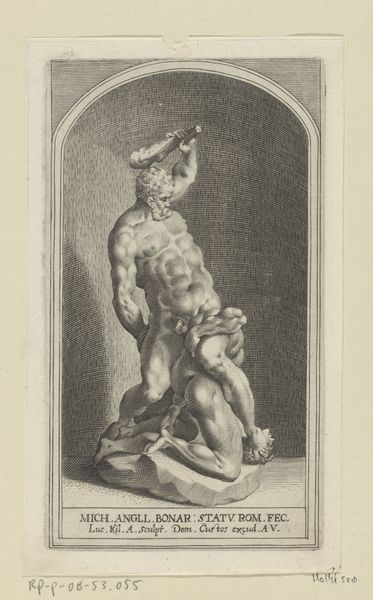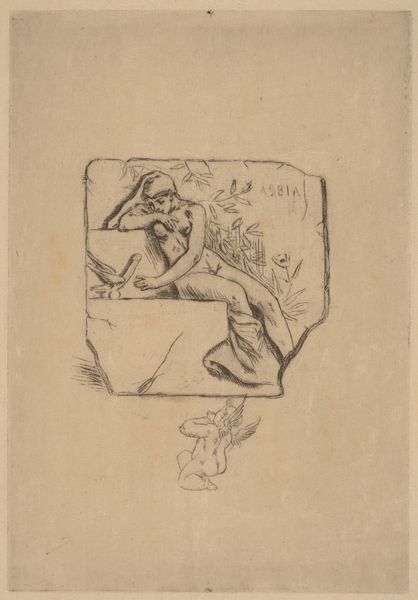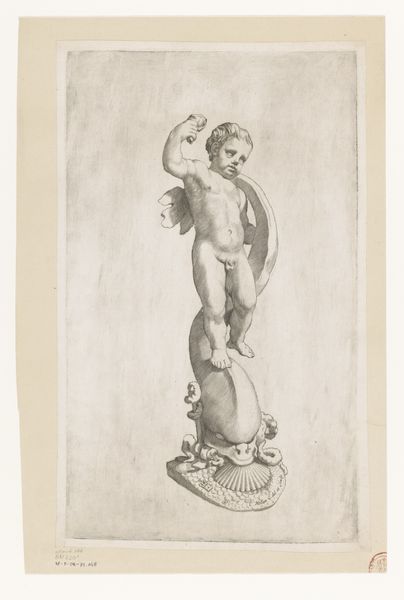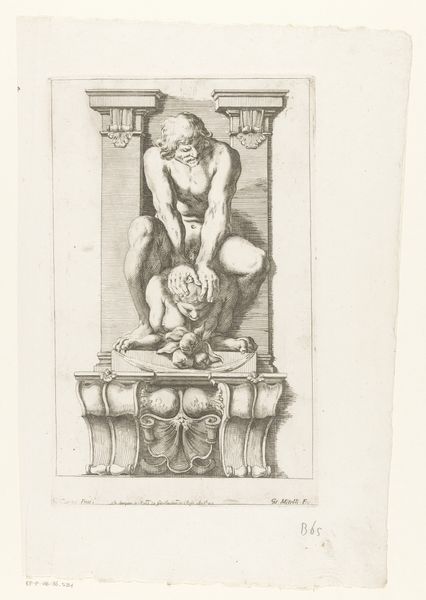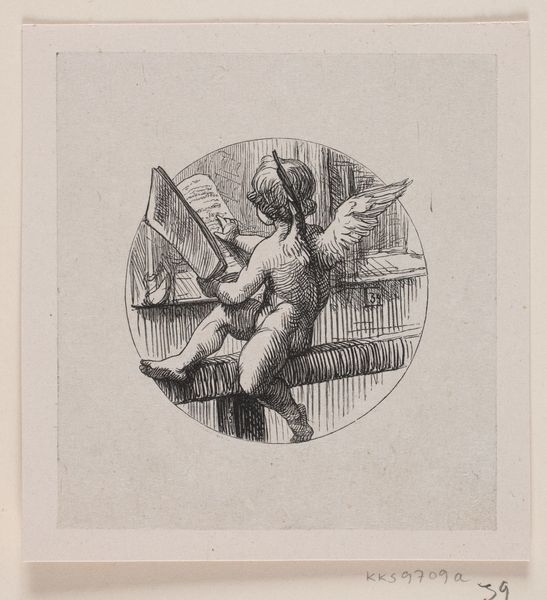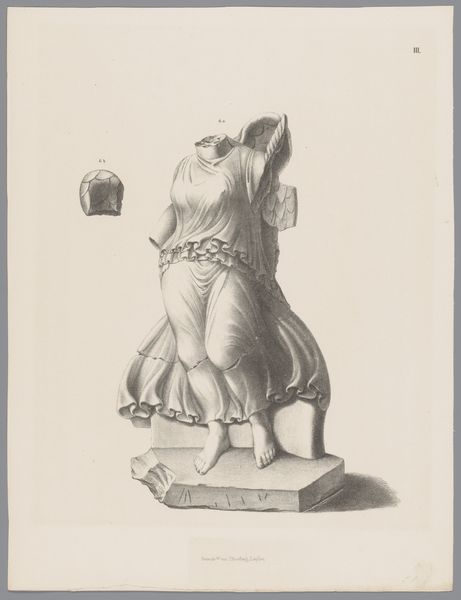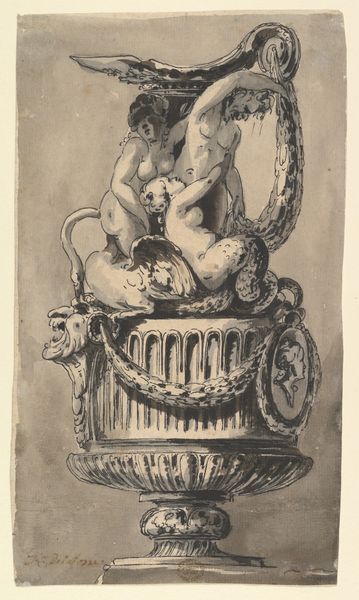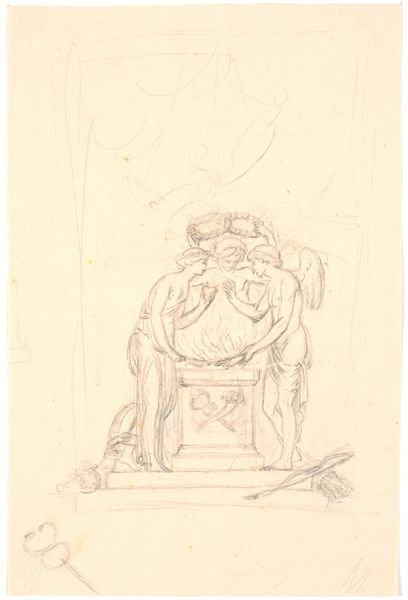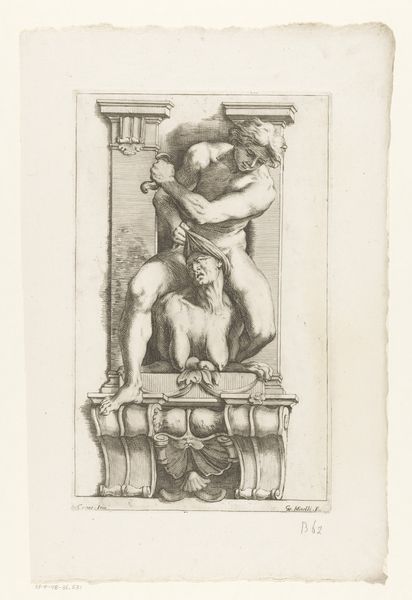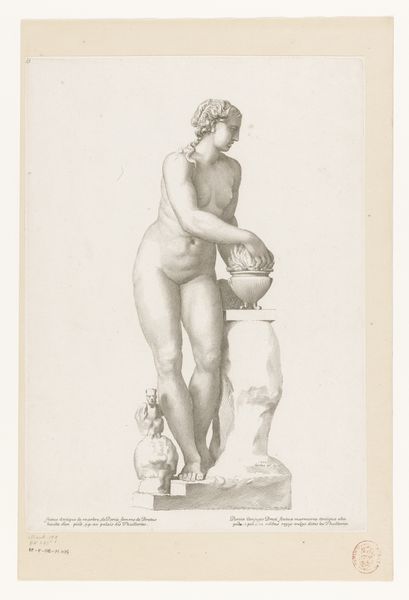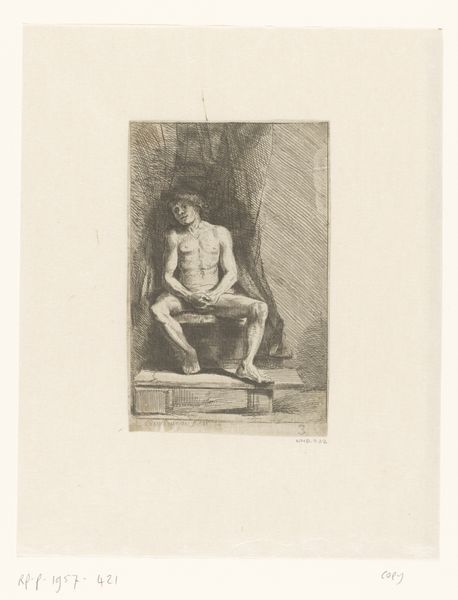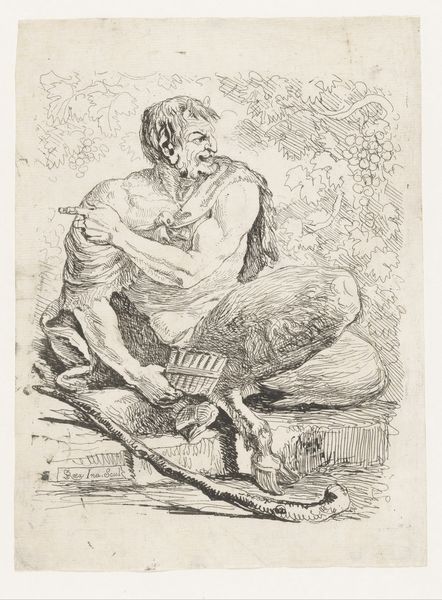
drawing, etching, ink, sculpture
#
drawing
#
pen sketch
#
etching
#
asian-art
#
figuration
#
ink
#
sculpture
#
orientalism
Dimensions: height 319 mm, width 193 mm
Copyright: Rijks Museum: Open Domain
Editor: This is "Chinese Temple Lion and Turtle Shell" by Maurits van der Valk, dating from around 1867 to 1914, done with ink and etching. The textures are so finely rendered. What do you find particularly compelling about this piece? Curator: Immediately, I'm drawn to the pairing of the lion and the turtle. The lion, a symbol of power, protection, and even imperial authority in Chinese culture, juxtaposed with the turtle, which represents longevity, stability, and the cosmos. Doesn't it strike you as a deliberate commentary on enduring power? Editor: It does now that you mention it! I was focusing more on the surface details, like the decorative patterns in the background, or the somewhat humorous face of the lion. I didn’t consider the symbolic weight each element carries. Curator: The details certainly matter, informing the symbolism! Note the lion's posture: seated, yet alert. Consider it’s role guarding sacred spaces. How might that relate to the more humble turtle? The turtle carries its home on its back; security wherever it goes. Editor: So, the artist is playing with the idea of protection in different forms? Almost contrasting the overt power of the lion with the subtle resilience of the turtle? Curator: Precisely! And notice the "orientalism" label on this drawing. Doesn’t this image perhaps echo the Western fascination with Eastern philosophies and symbols during that period? A romantic, perhaps idealized, view of Eastern cultures? Editor: It certainly makes me rethink my initial impressions, realizing how much cultural context I was missing. Curator: Indeed. By understanding the symbols, we gain a richer appreciation of the artwork's meaning, and the cultural dialogue it represents.
Comments
No comments
Be the first to comment and join the conversation on the ultimate creative platform.
